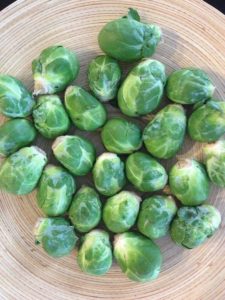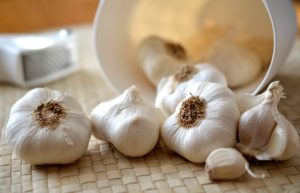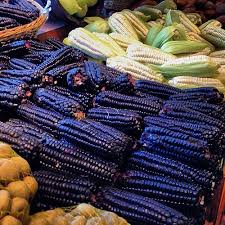While Apples are pretty much a staple in most homes in North America, I imagine that there are many varieties that you have yet to try! My grandparents had an apple tree in their backyard and I grew making apple crumbles and apple pies with my grandma. Despite all those apples as a kid, I did not really like raw apples until I was an adult. Green were too tart for me and red and yellow were always too mealy (I now know that’s because they were OLD – many months out of season). Americans are so used to getting all types of produce year round in super markets, but in reality, those foods are either stored in cold storage for many months, grown in a different climate and shipped in, or grown in a greenhouse.
 As an adult, I have come to really like all kinds of pink apples: pink lady, fuji, gala, and honeycrisp. I also only eat apples during apple season and during the very early weeks of cold storage. In Northern California, apple season begins in mid-late July and generally lasts until October. Thus, I only consume apples from July-December.
As an adult, I have come to really like all kinds of pink apples: pink lady, fuji, gala, and honeycrisp. I also only eat apples during apple season and during the very early weeks of cold storage. In Northern California, apple season begins in mid-late July and generally lasts until October. Thus, I only consume apples from July-December.
Besides eating apples with almond butter, my favorite thing to use apples for is apple pie, any surprises there??? Jennifer Tyler Lee recommends that folks make an apple galette, warm cinnamon apples, or apple chips.
Food Facts:
- Wild apples have SIGNIFICANTLY more phytonutrients than our domesticated varieties – some wild varieties have up to 475 times more phytonutrients than certain domesticated varieties.
- If you were to plant the five apple seeds from an apple, you would get FIVE different varieties from those new trees. Once a variety is identified, new trees are grown by grafting (a method that involves cutting off branches from a tree and attaching that branch to a less desirable tree that has been trimmed back). This is known as extreme heterozygosity.
- Any apple that is less than two inches in diameter is considered a crabapple.
- Most of our modern apples can be traced back to central Asia.
- There were once 15,000 varieties of apples growing in the United States, now there 500 varieties.
- Apples harvested at the end of apple season will store the longest – several months, as compared with apples harvested in the beginning of apple season – several weeks.
- Apples store best in the crisper drawer of your refrigerator.
- An apple with the peel contains 50% more nutrients than an apple without the peel.
- Raw apples contain more nutrients than cooked apples.
- Apples are a good source of vitamins C and K and potassium.
- Good source of pectin and other fibers.
- Rich source of flavonoids.
Sources:
The 52 New Foods Challenge by Jennifer Tyler Lee, Encyclopedia of Healing Foods
by Michael Murray, Joseph Pizzorno, and Lara Pizzorno, Superfoods
by Tonia Reinhard, Eating on the Wild Side
by Jo Robinson, and The Botany of Desire
by Michael Pollan





 The Globe/French artichoke is the most nutrient dense variety.
The Globe/French artichoke is the most nutrient dense variety. and just I had to include it for this post. It is me to a T. While garlic is not new to most any of us, there are always new and inventive ways to include this superfood in your diet. I include it in tomato sauces, in my bone broth, in stuffed peppers,
and just I had to include it for this post. It is me to a T. While garlic is not new to most any of us, there are always new and inventive ways to include this superfood in your diet. I include it in tomato sauces, in my bone broth, in stuffed peppers,  Has been demonstrated to protect against atherosclerosis, heart disease, elevated cholesterol levels, elevated blood pressure.
Has been demonstrated to protect against atherosclerosis, heart disease, elevated cholesterol levels, elevated blood pressure.
 Corn is native to Central America.
Corn is native to Central America.
 In Eating on the Wild Side, You’ll learn that sweet potatoes aren’t in the potato (nightshade) family but in the morning glory family, that drinking a glass of beet juice before a run will help you run longer (due to the naturally occurring nitrates), that the outer leaves on lettuces are the most healthy because they make the most chlorophyll, and that broccoli loses most of it’s phytonutrients within 24-hours of harvest – so grow your own or shop at the farmer’s market and look for it on ice.
In Eating on the Wild Side, You’ll learn that sweet potatoes aren’t in the potato (nightshade) family but in the morning glory family, that drinking a glass of beet juice before a run will help you run longer (due to the naturally occurring nitrates), that the outer leaves on lettuces are the most healthy because they make the most chlorophyll, and that broccoli loses most of it’s phytonutrients within 24-hours of harvest – so grow your own or shop at the farmer’s market and look for it on ice.